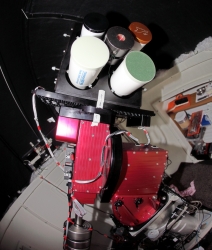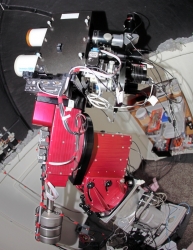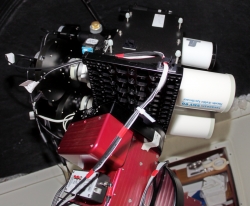Looking at the front face view of the array, top left we have the TS 80mm triplet APO, top right is the 80mm Megrez guide scope, and occupying both lower slots are the pair of Sky 90s. Looking at the back there are three M26C 10-megapixel one-shot colour CCDs and a Starlight Xpress guide camera connected to one of the M26Cs. Look at all that spaghetti 🙂




